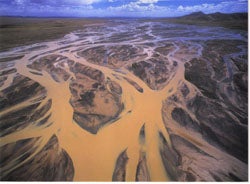Looking for more insights?
Sign up to stay informed about our latest article releases.
China is facing a water crisis that one senior official has described as “more severe and urgent than any other country in the world.” The problem is the result of rapid economic expansion, mismanagement of water resources, pollution, and drought. Experts say that a peak water shortage will occur in 2030, when the population rises to 1.6 billion, which will see supply fall to just 1,760 tons per person - a level the UN defines as the "threshold of concern." Meanwhile, the quality of the existing supply continues to deteriorate. Some 70% of the country’s lakes and rivers are polluted, and the two largest waterways, the Yellow and Yangzi rivers, are in danger of dying. The crisis is affecting the health of millions of people and is becoming a bottleneck to economic development. Experts say that public awareness is growing and that progress is now being made in dealing with the challenge. However, a major effort will still be needed to avert a catastrophe.

Sign up to stay informed about our latest article releases.